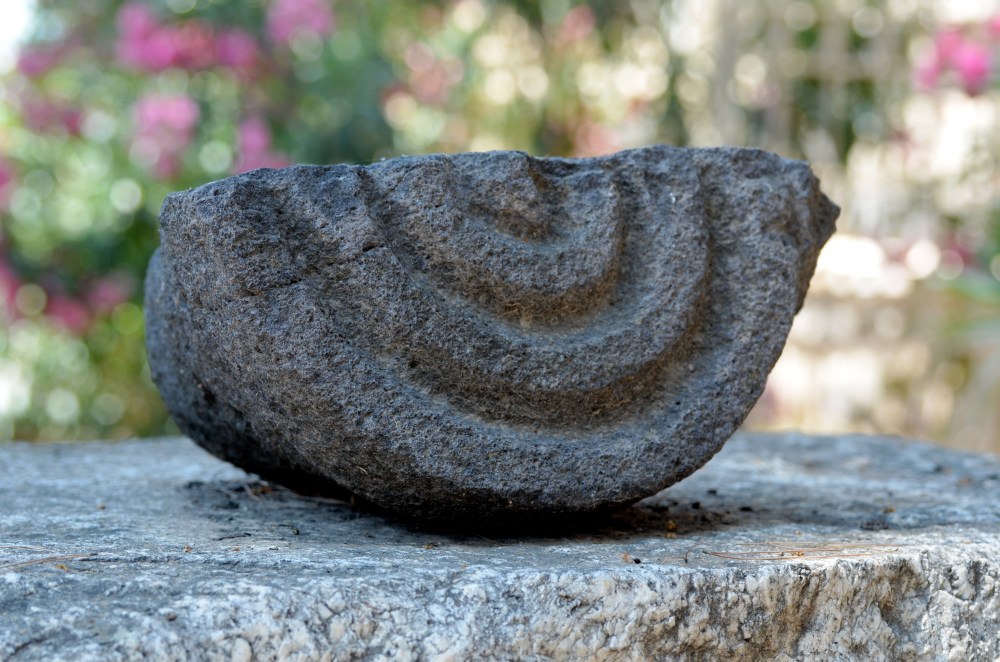 Kinnor is the Hebrew word for harp. The Sea of Galilee is shaped like a huge harp, and that is possibly how its name in Hebrew was first coined, “Kinneret.” Most say the body of water looks smaller in real life than what they pictured in their minds while reading the Bible.
Kinnor is the Hebrew word for harp. The Sea of Galilee is shaped like a huge harp, and that is possibly how its name in Hebrew was first coined, “Kinneret.” Most say the body of water looks smaller in real life than what they pictured in their minds while reading the Bible.
Honestly, I think after reading in general — most of life in real time seems “smaller.” Books plus imagination equals grandiose thoughts, ideas, images, and plans.
God gave us such marvelous imaginations. We have this fantastic ability to dream, a gift straight from the mind and heart of our Creator because we are fashioned from His own image. It is such a quicken thought to imagine Jesus Himself as a dreamer.
I am constantly disappointed by what I see in reality because of the verve and creativity bumping around in my head. Creativity does make the world go round.
With that said, the Son Man — who is also the Son of God, Jesus or Yeshua in Hebrew — does not disappoint. The love toward humankind, miracles, outstretched hands of compassion that He showed on the banks of the Galilee are bigger than life and better than anyone could imagine.
One of the towns on the shores of the Kinnert is Capernaum, used by Yeshua for His public ministry in the region and later cursed by Him for not receiving His teachings and miracles. In Hebrew, it means simply town of Nahum; although it is not considered to be named after the prophet Nahum. The old fishing village sets on the north of the Sea of Galilee, serene in location, and is saturated with glorious sunlight during the day. The ancient stony, carved ruins gleam with illumination on many levels — leading us to the significant events of yesteryear.
Standing among Capernaum’s rubble, it is easy to imagine Jesus walking arm-in-arm with Peter and Andrew along dusty, rocky pathways. Several disciples came from this place and knew it well. It is natural to envision the Master standing in the local synagogue of the day, expounding on truths that prick the hearts of modern men who flock to its ruins from around the world to inspect the fallen, broken stones and hear the old stories of the ancient town of miracles.
Although just a ruin, Capernaum is still called the town of Jesus.
The Gospels tell us that after Jesus returned from His temptation in the wilderness,
Capernaum was the first place that He taught. The people were astounded at His impartation and authority. It was here that Peter’s mother-in-law was healed from a fever, the centurion’s child delivered from an illness by Jesus’ word alone, the paralytic lowered through the roof to be touched by the Master; and from here, Jesus climbed into a simple fishing boat to calm the seas and winds of a sudden storm.
It is intriguing that among Capernaum’s ruins were found Stars of David engraved in stone as well as a seven-branched menorahs and an image of the Ark of the Covenant. It shows these important Jewish symbols are indeed very ancient and will continue to be significant in the days ahead to those who have ears to hear and eyes to see the Jesus, the Jewish Messiah. The carvings on the ancient stones are the fingerprints of Jesus. He left them there to help us believe, to show us the way.
These dead relics still radiate the heat and power of His life force that could not be left in the ground, but burst open in life on the third day after His unjust and cruel crucifixion on Golgotha. He went there willing, yet it was unjust. His blood still cries from the ground. And one day, he will even the score. Not with flesh and blood; but with the enemies of God.
Star of David
Carved seven-branched menorah
4th-Century Synagogue*
The ruins of a 4th-Century synagogue are bleached brilliantly white by constant over-exposure to the Mediterranean sunshine and are made of ornately carved, limestone. In its day, the luminescent stone contrasted severely with the rest of the village which was made of black basalt stone, layered and fitted together without mortar.
It is very significant that the ruins beneath these gleaming white ones of the synagogue are black basalt stone as well and probably date back to the time period of Jesus. Many scholars agree that Jesus probably taught from this very place. In fact, some suggest that possible four or five synagogues have rested on this same spot through the centuries. One may have been converted for use by early Christians, who were indeed Jews by birth, lifestyle, and practice.
Columns line the synagogue.
I wrote the following short poem while on a visit to Capernaum.
Cursed Capernaum
The town of Jesus
Capernaum
dusty rubble and
raw rudiments
standing square,
gleaming brilliantly
in the Middle Eastern sunshine,
underscoring, remarking
in feelingless facts
that a Jew lived
and left
a legacy of proofs
etched hot in cold stones.
Even this old fishing village
cursed by Jesus
for unbelief —
of miracle after miracle —
now dead in broken relics
breathes living
hope for me and
for all who hear
the stones shouting
the stones shouting
silently
shouting.
© Bonnie Saul Wilks
all rights reserved
*(photo courtesy Wikepedia: Capernaum)






Bon you are continuing to amaze us with your photography and writing. I hear a shout!
Ems, Thank you!!